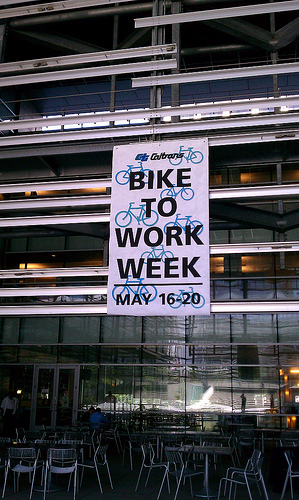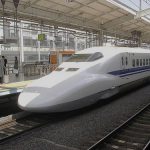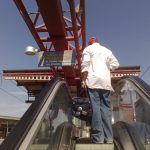Caltrans scrambles to keep up with transportation trends

The Caltrans of old wouldn’t have touched a grassrootsy, environmentally conscious effort like Bike to Work Week. From ubrayj02.
SNL’s “The Californians” pokes fun at the Golden State’s obsession with freeways and car culture, but the show’s writers may have to revise their scripts. Californians are walking and biking twice as much as they did ten years ago, according to the most recent household survey conducted by the California Department of Transportation.
Caltrans, as the organization is popularly known, has been shifting its priorities to align with transportation trends that buck auto-centered policies. Building more (and wider) freeways is no longer the answer, says Mark Dinger, media relations manager for the agency.
“That was, you know, our grandfather’s Caltrans, where we thought about pouring more concrete all the time,” he said. “We need a sustainable transportation system that’s going to be good for our environment and good for our health, too.”
To that end, Dinger says that the agency has awarded millions of dollars to cities and counties for projects that promote biking and walking. Caltrans has also become more tolerant of street designs that encourage better bike lanes and crosswalks, he continued, and has instituted internal reforms to help the organization better meet state mandates for smart growth and the reduction of transportation-related greenhouse gas emissions.
Dinger’s description of institutional reform and new policies and practices may do little to repair Caltrans’ reputation for incompetence and outdated initiatives. When asked to review the agency’s performance, the State Smart Transportation Initiative (SSTI), which sits at the University of Wisconsin in Madison, released earlier this year a report that blasted Caltrans for its inability to support the state’s sustainability goals.
Between 2003 and 2011, for example, lane-miles of non-interstate freeways in California rose 6 percent even as the number of vehicle miles travel dropped statewide. “The department has not come to grips with the reality of induced traffic and the relationship between transportation and land use,” wrote the report’s authors.
Part of the issue, they continued, is an organizational culture resistant to change and poor management. SSTI interviewed more than 100 current Caltrans employees who described leaders that allowed underperforming colleagues to remain at their posts, non-engineering staff such as planners who were paid below market rate, and high-performing workers who left the agency after failing to be recognized with meaningful promotions, leading to a brain drain.
It’s not the first time that Caltrans has heard such criticisms, noted SSTI. Indeed, the department conducted a self-assessment not long ago that led to the creation of new committees, surveys, and offices in an attempt at improvement. “In all cases, however,” wrote SSTI, “these efforts have not yet delivered.”
That skepticism didn’t stop the authors from providing a long list of recommendations, chief among them repairing existing relationships and nurturing new ones, such as those with local partners. “On critical policy issues that would logically involve Caltrans, such as creating a high-speed rail network and reducing transportation climate effects, the legislature has worked around the department,” lamented SSTI.
Related Posts
Category: Infrastructure, Transportation

















